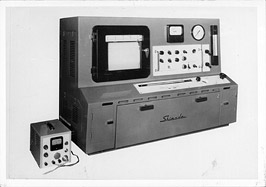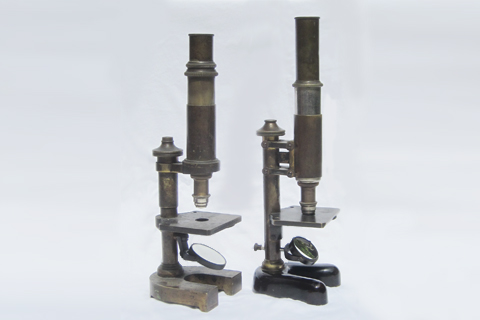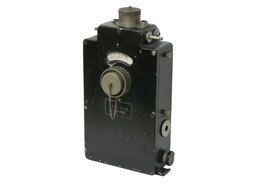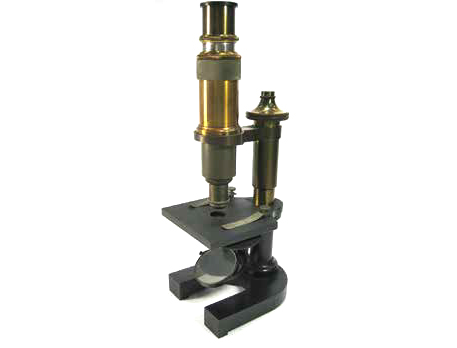Introduction
Japan Analytical Instruments Manufacturers Association (JAIMA) and Japan Scientific Instruments Association (JSIA) were authorized to establish a heritage certification program for analytical instruments and scientific equipments. For the purpose of telling as a cultural inheritance in history, the technologies, instruments, samples, etc. of analytical instruments and scientific equipments were selected by the Selection Committee members (the experts of industry, government and academia).
Summary
With the goal of passing on to future generations, as cultural heritage, the analytical techniques and instruments, and scientific instruments, that have been created in Japan and the analytical techniques and instruments, and scientific instruments that have made a contribution to the lifestyle, economy, education and culture of the people of Japan, The Japan Analytical Instruments Manufacturers' Association (JAIMA) and the Japan Scientific Instruments Association (JSIA) have introduced the Analytical and Scientific Instrument Heritage Certification system and will continue to maintain the operation of this system on an ongoing basis.

(Shimadzu Corporation) (No.12)

(Exhibition room at RIKEN KEIKI CO., LTD.) (No.21)

(Exhibition room at RIKEN KEIKI CO., LTD.)(No. 36)

(Sakura Finetek Japan Co., Ltd. ) (No.52)
Selection Committee members for heritage of analytical and scientific instruments
- Chairperson : Yoshimasa Nihei (Professor emeritus of The University of Tokyo)
- Itaru Ishii (Director of Department of Science and Engineering, National Museum of Nature and Science, Tokyo)
- Akira Ishitani (Advisor emeritus of Kanagawa Academy of Science and Technology)
- Masaaki Kubota (Director General of NIMC, Advanced Industrial, Science and Technology (AIST))
- Keiichi Furuya ((Professor emeritus of The Tokyo University of Science)
- Hiroo Yahasaki (Professor emeritus of The University of Tokyo)
Analytical and Scientific Instrument Heritage Certification
1) Objectives
To identify items of "Analytical and Scientific Instrument Heritage" and provide certification by the Japan Analytical Instruments Manufacturers' Association (JAIMA) and the Japan Scientific Instruments Association (JSIA), with the goal of promoting the preservation of analytical techniques and instruments, and scientific instruments of historical significance, and their transmission to future generations as cultural heritage.
2) Certification Policy
"Analytical and Scientific Instrument Heritage"are documents and physical object that demonstrate the history of analytical techniques and instruments, and scientific instruments, that satisfies one of the following requirements.
(1) The item is an analytical technique or instruments, or scientific instrument, that demonstrates"an important result of historical development"
(2) The item is an analytical technique or instruments, or scientific instrument, that made a contribution to the lifestyle, economy, education and culture of the people of Japan"
3) Certification System (criteria, relevant categories, relevant eras)
3-1) Certification Criteria
In general, where either or both of the following sets of criteria (1)-1 or (1)-2 is satisfied and the instrument(s) is/are currently in existence in Japan.
- (1) -1 Items of importance to the history of the development of technologies and instruments for measurement and analysis (subsequently abbreviated to "analytical instruments") and scientific technologies and instruments (subsequently abbreviated to "scientific instruments") and possessing a significant value to future generations that satisfy the following criteria.
- 1) The item is an important element, or represents an important stage, in the development of the relevant analytical or scientific instrument.
- 2) The item demonstrates the originality, from an international perspective, of the relevant analytical or scientific instrument.
- 3) The item contributed to the creation of new analytical or scientific instruments.
- (1) -2 The item is an analytical technique or instruments, or scientific instrument, that has made a significant contribution to the development and present state of the lifestyle, industry, economy, society and culture of the people of Japan and satisfies the following criteria
- 1) The items played a clear role in the development of the life of the people of Japan.
- 2) The item contributed to the development of the industry and economy of Japan and to improving Japan's international position.
- 3) The item made an important social, cultural, scientific, or technological contribution.
3-2) Qualified Applicants
As a general rule this shall be the owner of the object submitted for certification.
(In cases where the owner of the item is not the manufacturer, the owner is required, as a general rule, to consult with and obtain the approval of the manufacturer)
3-3) Categories of Items eligible for Certification
The categories of items eligible for certification are, in principle, as follows:
- (1) Instruments that are no longer in use and are being preserved, or are being collected for preservation.
- (2) Document and materials related to technologies or instruments.
3-4) Eras from which items can be Certification
The eras from which items can be certification are, in general, any industrialera prior to 1990, from the time of the Industrial Revolution onward.
4) Organizational structure and role of "Analytical and Scientific Instrument Heritage"
4-1) "Analytical and Scientific Instrument Heritage" Certification Bodies
The certification bodies shall be the Boards of Directors of both of the Japan Analytical Instruments Manufacturers' Association (JAIMA) and the Japan Scientific Instruments Association (JSIA)
4-2) "Analytical and Scientific Instrument Heritage" Certification System Evaluation Committee
The Head of the Committee shall be appointed by the Chairpersons of both the Japan Analytical Instruments Manufacturers' Association (JAIMA) and the Japan Scientific Instruments Association (JSIA), and each company shall appoint two other members. One of those members shall be appointed Secretary of the Committee.
4-3) "Analytical and Scientific Instrument Heritage" Certification System Selection Committee
The Selection Committee shall be composed of experts from industry, academia and government. The selection of certified items shall be conducted following strict and impartial investigations by the members of this committee.
4-4) "Analytical and Scientific Instrument Heritage" Secretariat
The secretariat shall consist of the secretary of the Certification System Evaluation Committee, and shall constitute the executive organ of this Program.








